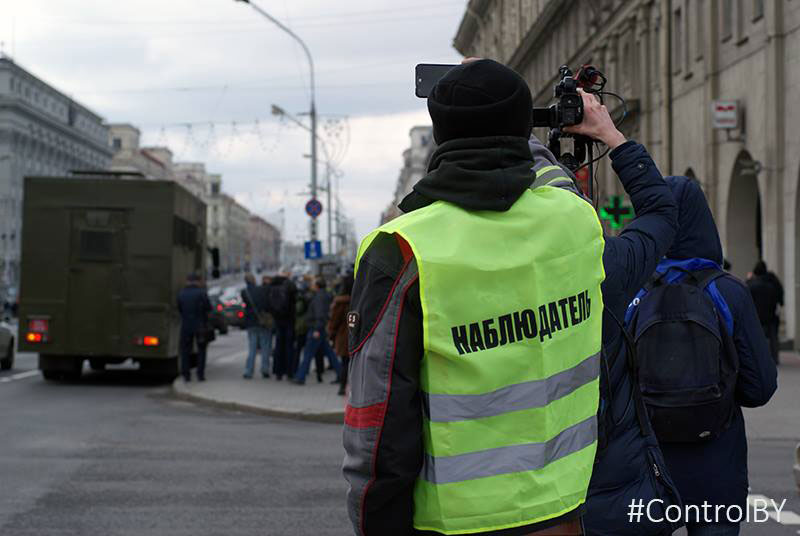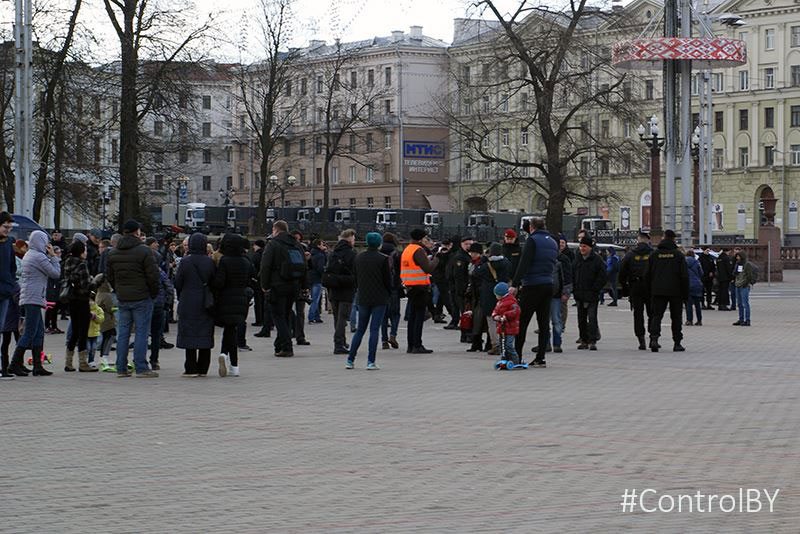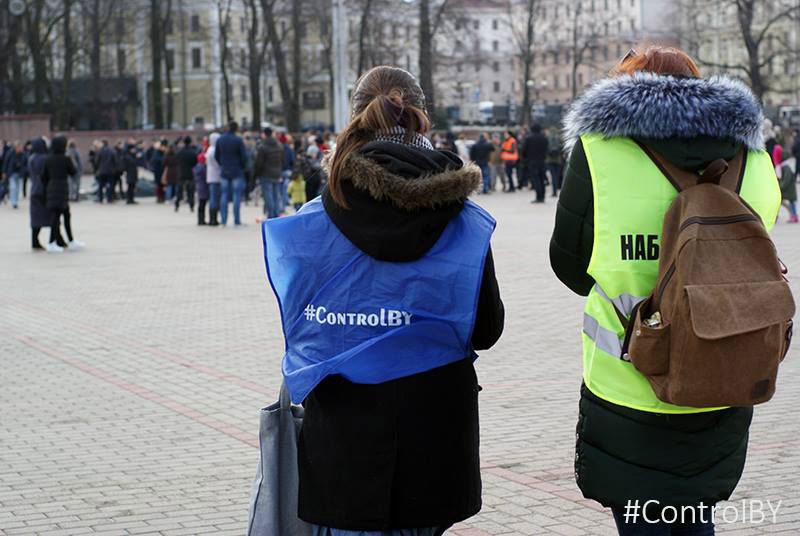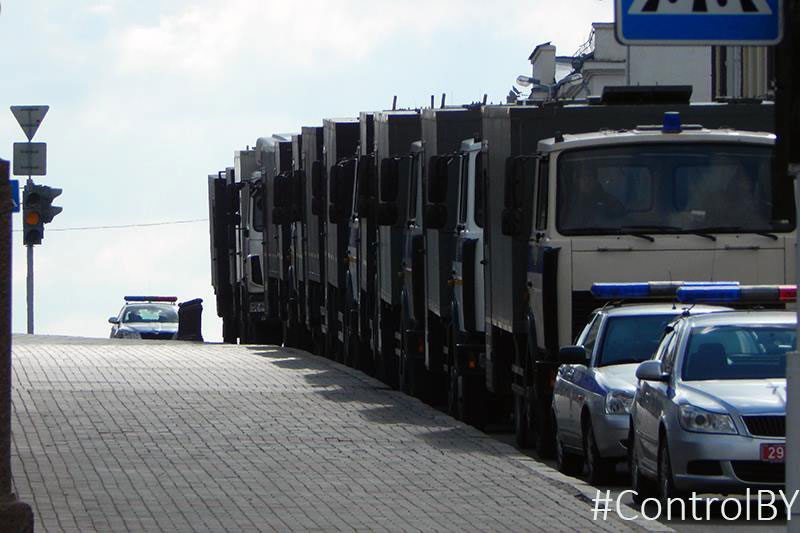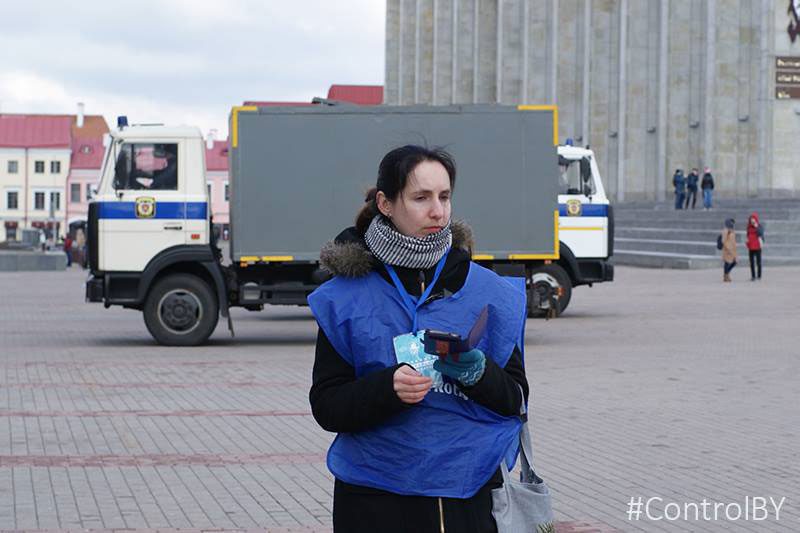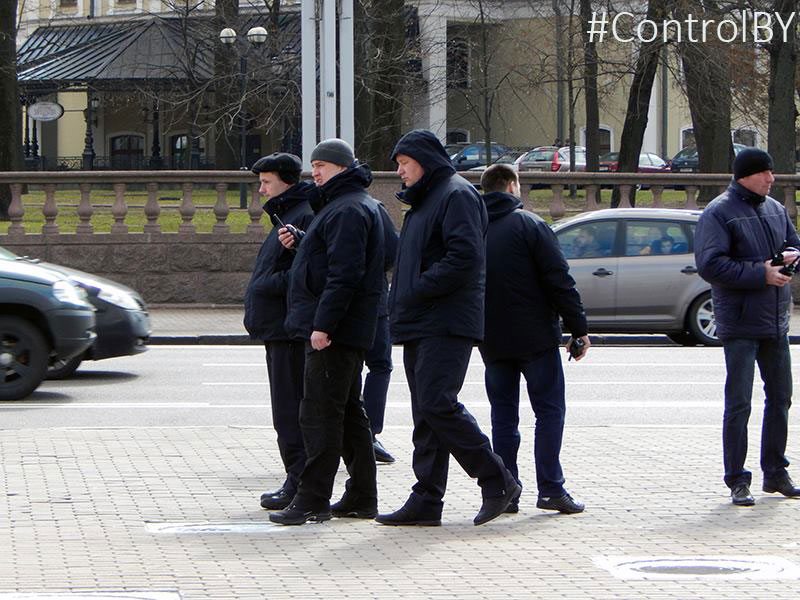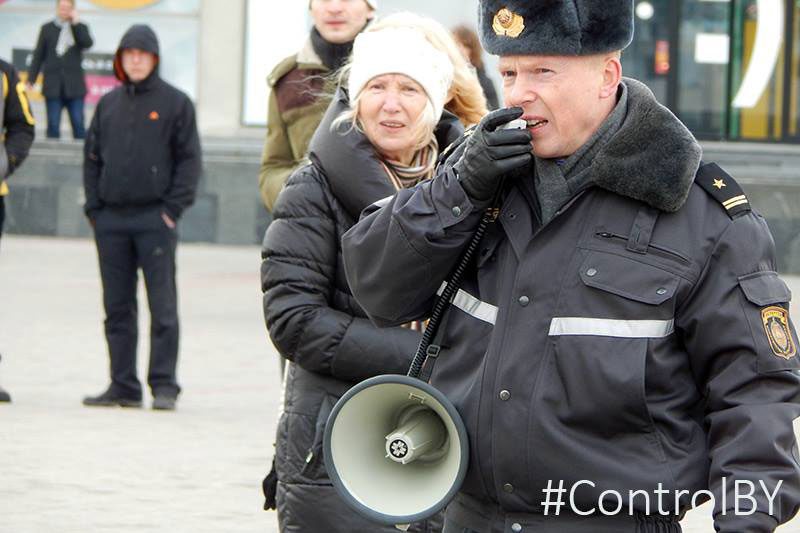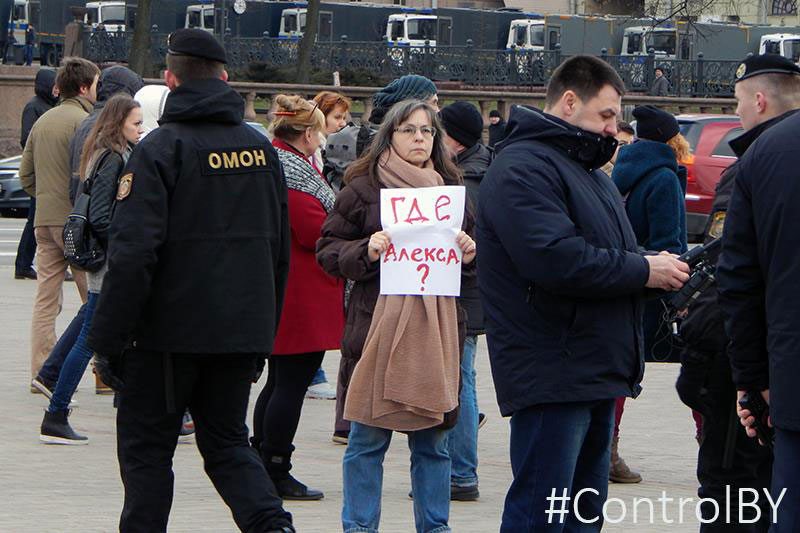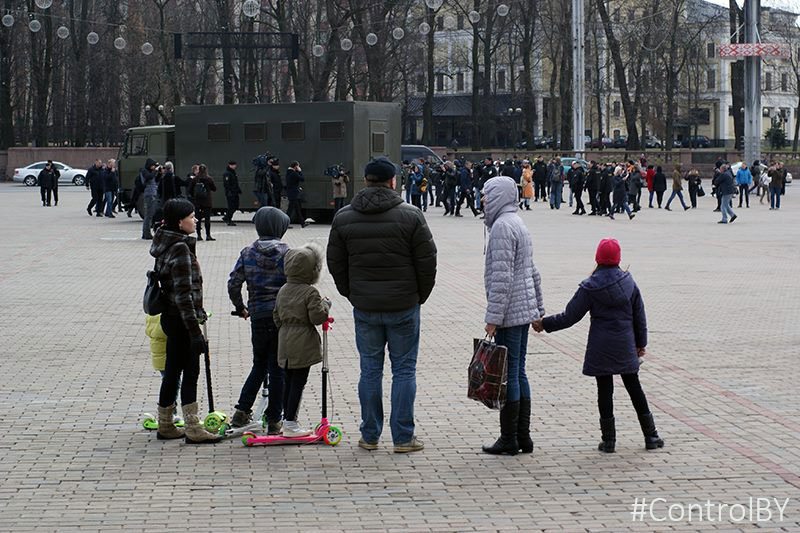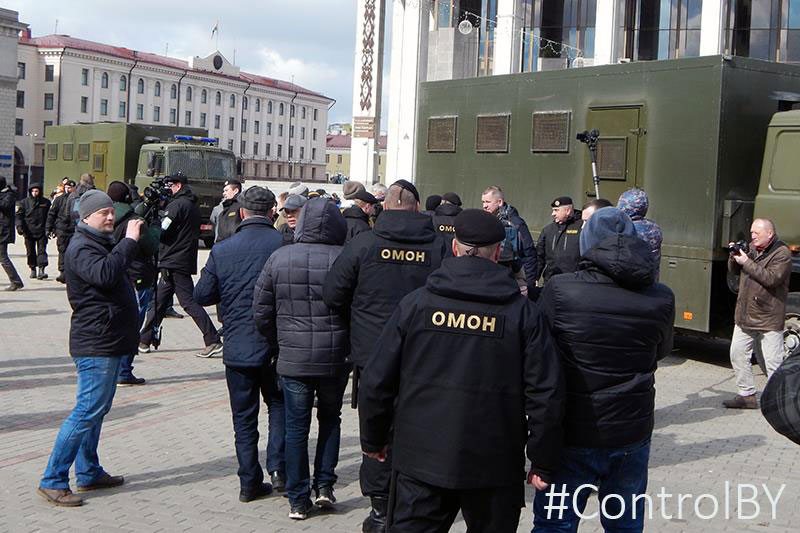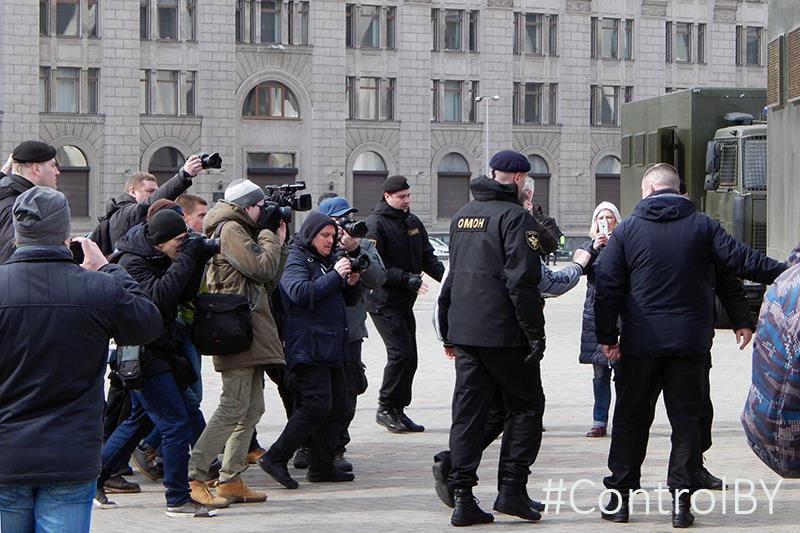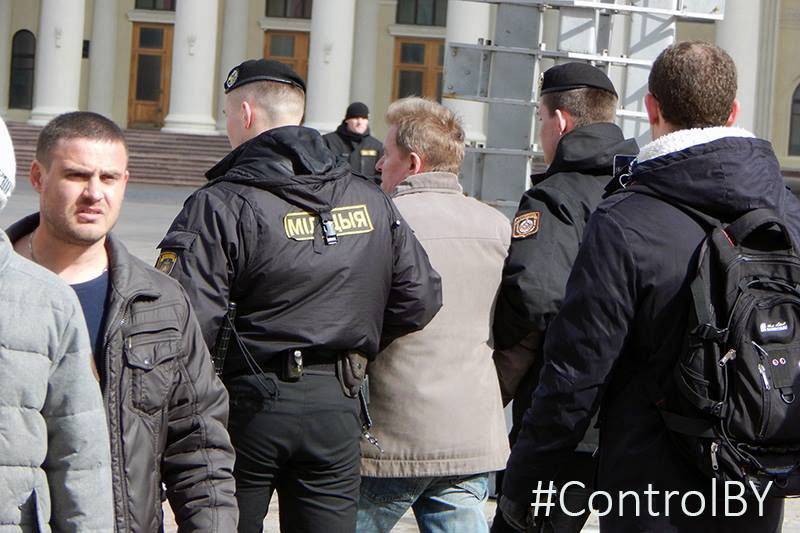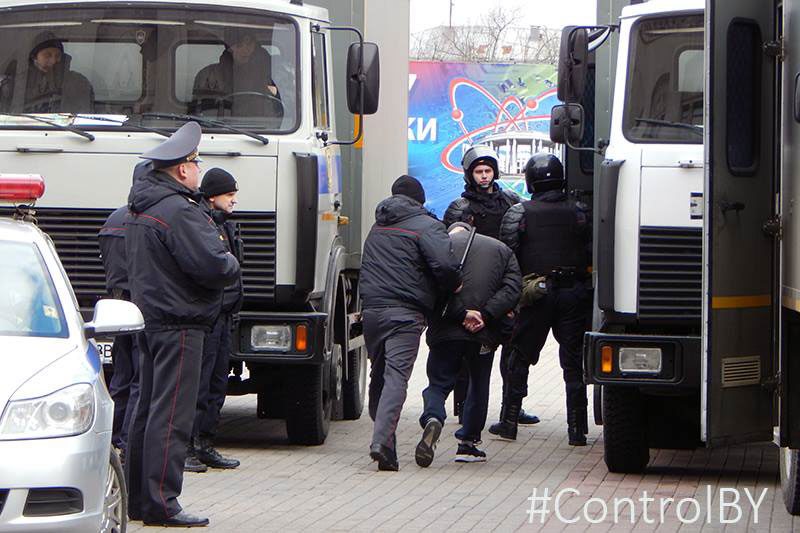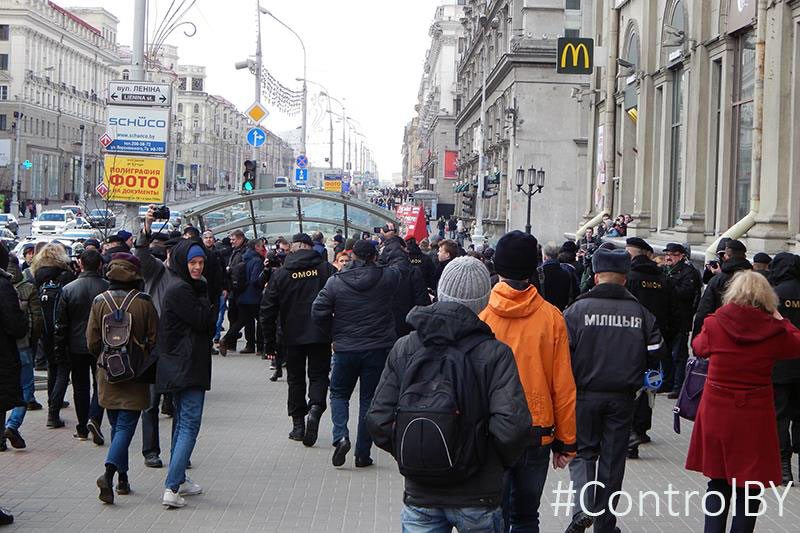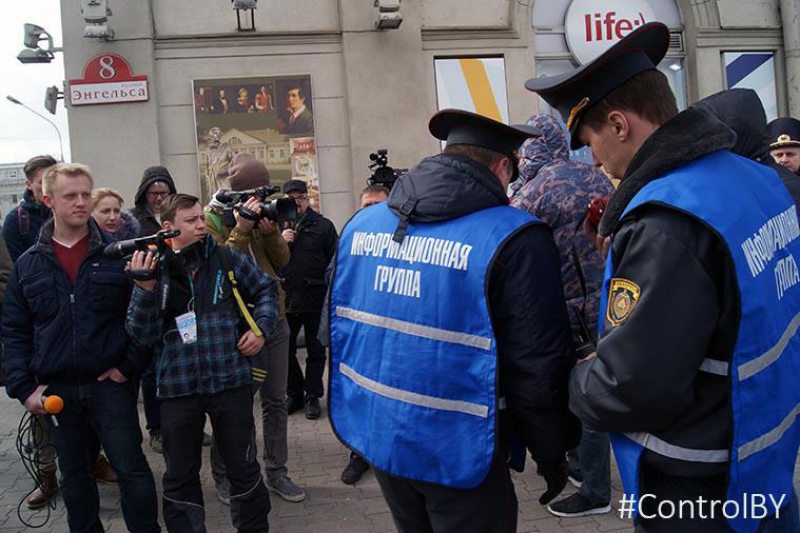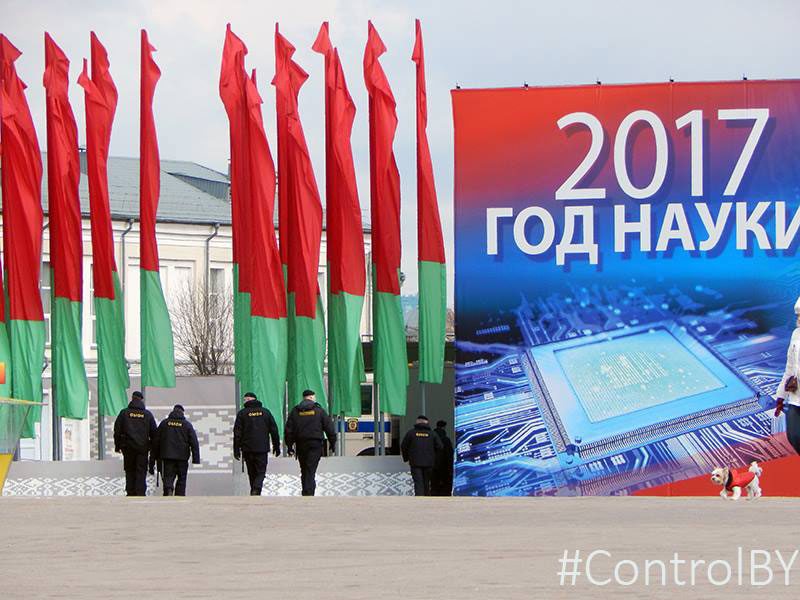Report on monitoring a protest in Kastryčnickaja Square in Minsk. 26 March 2017
Observations
The protest was shut down by the police and many of its participants were detained. Notice also that there were no violations of public order, and no calls and acts of aggression from the side of its participants.
Since the protest participants did not violate public order, only the fact of their participation could not serve as a legal basis for detention. Therefore it follows that the detentions were of anarbitrary nature [1].
The police were disturbing the work of observers during the peaceful assembly. Police officers twice ordered observers to leave the venue of the protest without giving any reasons why. Further, Ms. Tatsiana Reviaka, a human rights defender who was documenting the peaceful assembly by filming it with her mobile phone camera, was arrested by the policemen.
On the positive side, there were representatives of the Information Group of the Minsk city police at the protest. However, they neglected to communicate with the observers.
Monitoring methodology
Belarusian Helsinki Committee as well as the Human Rights Center „Viasna” have been conducting systematic monitoring of mass actions for several years using a specially designed monitoring methodology that includes the following aspects:recruiting observers and teaching them the principles of public control, monitoring methodology, and standards of peaceful assemblies; filling in an observation check-list of in presence control; processing questionnaire data and writing a report. The observation check-listsof mass actions were developed collaboratively by the human rights organisations and includes such aspects as scopes for functions of observers and mass media, for organisation and holding mass action, for police officers, as well as theavailabilityof emergency medical assistance. The observers are allowed to conduct the monitoring only if they endorse the
observation rules and principles (independence and political neutrality; description of facts rather than views; non-interference into the observed events; commitments to principles of law; abstention from all forms of violent actions and discriminatory practices, andprofessional behaviour).While conducting monitoring, observers shall stand apartfrom protest participants, wear blue and yellow vests, and carry an observer’s badge.
Preliminary information
In the mass media and social networks, it became known that a public action in support of people detained during March 25th's peaceful demonstration will be held on 26 March 2017 starting at 12 PM in Oktiabrskaia square in Minsk.
There were 10 observers (including 2 foreign citizens) present and continuously conducting observations during the public action. All observers received the required training prior to the events and were marked appropriately to identify them.
The course of the event
The following has been observed during the event:
1. There were police officers spotted around the space of the public action (5 people in the underpass of Kastryčnickaja metro station and two next to MacDonald’s) prior to it start. There were at least 6 officers of the special police forces, 4 police officers, and 10 law enforcement agents, including leadership in civilian clothing at the space of the public action took place. A large number of specialized vehicles were located in the streets around the square - 8 lorries were parked in the Engels street next to Kupalaŭskaja metro station exit, а police van was parked next to the Palace of the Republic on the side of Engels street, and a blue truck and a passenger car were next to the Trade Unions Palace. The observers also spotted specialized vehicles parked in more remote streets.
2. When the observers, with badges and dressed in vests, appeared in Kupalaŭskaja square, they were approached by a police officer and an officer of the specialized police forces. The officers did not introduce themselves, but asked the observers to clarify their reason of being on the square and what organisation they represent, and requested for their IDs to bepresented. Later, the police officers twice approached the observers with a
request to leave the public action space.
3. According to information insocial media, four students were already detained at Kastryčnickaja metro station prior to the public action. Initially, there were about 30 journalists on Kastryčnickaja square next to Milepost Zero. About 40 people gathered at the square by 12.10. Police officers in civilianclothing lined up along the avenue, while 10 special police officers were moving among the participants, offeringparents with children and journalists to leave the square.
Following this, two police officers in grey uniforms approached the crowd and demanded through loud-speakers participants to leave the square and journalists tomove away to a safe distance, otherwise force and specialized equipment would be used. This was followed by two police vans entering the square and the police officers forcing 7 detainees inside the vans, including Tatsiana Reviaka, a human rights defender whowas documenting the peaceful assembly by filming it with her mobile phone camera. After the police vans had left the square, two more participants were separated from the crowd; one of them was taken to the blue truck parked in front of the Palace of the Republic closer to the Trade Union Palace, while the second one was led to the cars parked behind the Palace of the Republic.
Right after these events, the participants who had been forced out of the square by the specialized police officerscrossed Engels street and started moving down Independence avenue pastingthe Centralny supermarket towards an underpass. Some police officers chased a young woman through the backyards at Engels street. Other police officers were blocking Kastryčnickaja metro entrance, claiming that the metro was closed.
At around 12:25 the participants went back to Kastryčnickaja square, where they remained until a police van approached and stopped at the cross-roads of Independence avenue and Engels Street and two people from the crowdwere forced into it. After the departure of the van,the majority of the participants once again relocated to the space in front of the Centralny supermarket. Three officials of the Information Unit of the city police came there as well to ask the journalists to move away.
By 12:45 three more people were detained. The participants moved closer to the supermarket; police were searching through the bags of the shoppers inside of the supermarket. Our observers documented a total of 20 detained.
4. The officers of the city police’s Information Unit declined a request to communicate with the observers.
5. There were no reasons given for thedetentions; some participants were forced into cars, while others got into the vans on their own.
Recommendations:
We call on the police officers to:
Stop arbitrary detentions and harassment of participants of peaceful assemblies as it contradicts the obligations of the Republic of Belarus under the international human rights treaties;
Ensure that policing of mass gatheringsis conducted by police officers dressed in uniforms and with identification badges or police shields;
Ensure that the employees of the city police’s Information Unit communicate both with the journalists and the observers.
We call on policy makers to:
Initiate legislative change with the goal of bringing the laws of Belarus into compliance with international standards on peaceful assemblies.
[1] According to the UN Working Group on Arbitrary Detention, deprivation of liberty can be considered arbitrary if the case in question is a manifestation of one of the following types of situations: a) it is impossible to invoke any legal basis for deprivation of freedom (category I); b) the deprivation of liberty results from the exercise of the rights or freedoms guaranteed by articles 7, 13, 14, 18, 19, 10 and 21 of the Universal Declaration of Human Rights and, insofar as States parties are concerned, by articles 12, 18, 19, 21, 22, 25, 26 and 27 of the International Covenant on Civil and Political Rights (Category II); c) the total or partial non-observance of the international norms relating to the right to a fair trial, spelled out in the Universal Declaration of Human Rights and in the relevant international instruments accepted by the States concerned, is of such gravity as to give the deprivation of liberty an arbitrary character (Category III).



